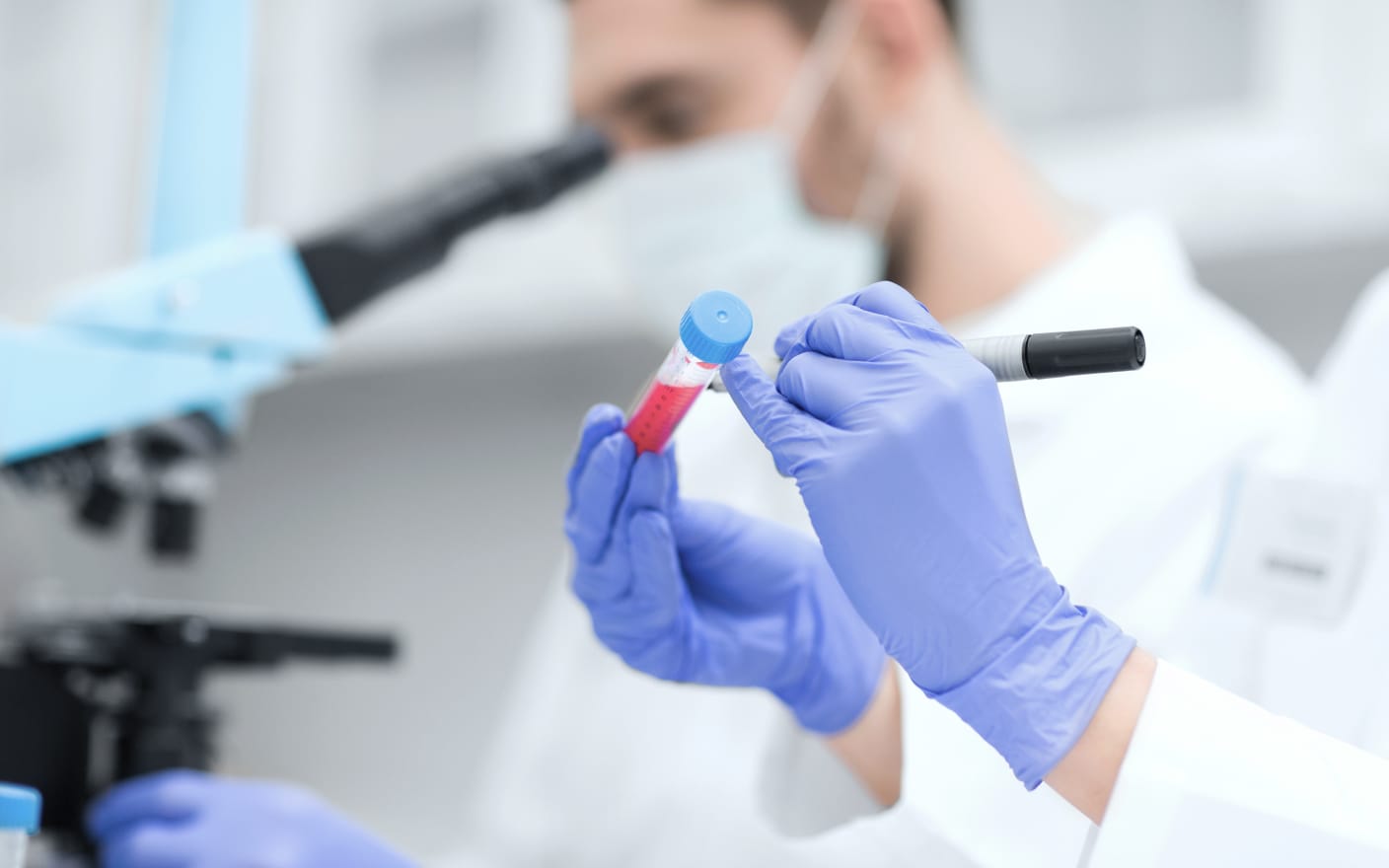Drug metabolism studies (the “DM” of DMPK) are a critical part of understanding drug efficacy and safety across the entire drug development continuum. In this blog, we provide an overview of metabolite profiling and identification studies, including: four types of metabolites that can cause drug development challenges, three important categories of assays, and regulatory implications.
Metabolite profiling and identification (MetID) is the qualitative and quantitative study of the biotransformation – or metabolic fate – of a drug in nonclinical animals and humans. These studies involve the search and structure elucidation of metabolites, the delineation of the metabolic pathways, and the determination of relative abundance of metabolites.
The presence of certain metabolites can lead to significant challenges, resource investment, and potential delays in drug development. At worst, they pose a safety risk to patients. That’s why MetID studies need to start as early as discovery and continue through the preclinical, Investigational New Drug (IND) and New Drug Application (NDA) stages.
So, what exactly do you need to look for in these studies?
4 Types of Metabolites Researchers Look For
With MetID, drug developers are looking for potentially active, reactive, disproportionate or unique human metabolites.
#1. Active metabolites
Active metabolites exert pharmacological effects on the disease target as the parent drug does.
A significant magnitude of active metabolites can cause the pharmacodynamic response to be greater or prolonged compared to the time course of the parent drug. This complicates the establishment of dose-response relationships for the parent drug. The information from active metabolites studies can be used to optimize drug design and dosage. Early identification of active metabolites in the preclinical stage can help drug developers avoid delays and improve the chances of success in later stages of drug development.
#2. Reactive metabolites
Reactive metabolites have electrophilic reactivity (through a process called bioactivation) that can cause toxicity.
Due to the electrophilic nature of these metabolites, they can covalently bind to DNA, CYP enzymes, or susceptible proteins in target tissues (e.g., liver). This can potentially lead to toxicities like mutagenicity, mechanism based CYP inactivation, and idiosyncratic adverse drug reactions.
With the help of metabolism studies, the risk of bioactivation can be assessed, mitigated and even resolved by applying insights gained to the drug optimization process.
#3. Disproportionate human metabolites
Disproportionate human metabolites are metabolites with exposures substantially higher in humans compared to in vivo models used in the standard toxicological studies.
If humans are exposed to a major drug metabolite (with exposure greater than 10% of the total drug related exposure at steady state), expensive and time-consuming nonclinical testing is required to underwrite the safety risk of human exposure to the metabolite – unless this metabolite demonstrates sufficient coverage in preclinical toxicology species in the MIST study.
#4. Unique human metabolites
Unique human metabolites are metabolites with exposures in humans but not animals, causing similar or greater challenges as disproportionate metabolites.
The risk of these four types of metabolites – particularly the disproportionate and unique human metabolites – underpins the need for a thorough comparison of metabolite profiles in each toxicology species with humans as early as possible.
Now that you know what to look for, let’s review the three high level categories that these studies fall under.
3 Categories of Metabolite Profiling & Identification Studies
#1. In Vitro MetID
In vitro studies are widely used in the pharmaceutical industry because they are simple and fast, allowing for high throughput. In vitro metabolic profiling and identification assays provide a quick read of the metabolism of a drug in the early and preclinical stages of drug development. These studies focus on three things:
Supporting drug discovery efforts by identifying metabolic soft spots.
Screening for reactive metabolites.
Establishing cross-species comparisons to guide toxicology species selection.
Information that identifies the major metabolites and associated metabolic pathways in in vitro assays can be used to design a metabolizing enzyme phenotyping experiment.
#2. In Vivo MetID
In vivo metabolite profiling and identification studies help researchers further discover what metabolites form following test article distribution, to understand the metabolic profile of drug in preclinical and human.
These studies establish in vitro-in vivo correlation and compare in vivo metabolism across species to assure the reliability of predicting in vivo metabolism in humans.
Specifically, in vivo MetID studies have three key objectives:
Evaluate metabolite exposure and metabolic clearance pathways in pre-clinical models.
Evaluate metabolite exposure and metabolic clearance pathways in humans.
Evaluate metabolite relative exposures in humans and pre-clinical models to determine whether selected toxicological species are appropriate from the MIST perspective.
Metabolite in safety testing (MIST) determines if there is a disproportionate metabolite in human plasma. If not, when dosing humans for the first time, risk assessments of human metabolites can be inferred from preclinical toxicological studies. If there is, nonclinical safety testing of the metabolite is required.
#3. Radiolabeled MetID
Radiolabeled MetID studies provide a definitive answer to metabolic profiling.
Radiolabeling is a method that allows researchers to follow the journey of a molecule through a pathway – posing unique advantages in MetID studies. Based on radioactive metabolite profiles, the distribution of each metabolite can be clearly observed and accurately quantified.
The results from radiolabeled MetID studies can:
Establish the basis for deciding the dose-exposure relationship of drugs.
Help interpret if toxicity is associated with the parent drug or its major metabolites.
Guide follow-up studies, clinical DDI experiments, and special population experiments.
FDA Guidance: Safety Testing of Drug Metabolites
In 2021, the U.S. Food and Drug Administration (FDA) released updated guidance on Safety Testing of Drug Metabolites to help drug developers know when and how to identify and characterize drug metabolites.
Here are three key takeaways from this guidance:
In vitro studies should be conducted before initiating clinical trials.
In vivo metabolism study results in nonclinical test species should be available as early as possible in drug development.
In vivo metabolic evaluation in humans should be conducted as early as feasible.
The bottom line: The earlier you determine metabolite profiles, the better.
Conclusion
The information about metabolic pathways and metabolite structures of test compounds is vital for designing and optimizing lead compounds, selecting clinical drug candidates, and supporting clinical studies. Ultimately, metabolite profiling and identification testing is integral to the overall development process.
WuXi AppTec provide comprehensive MetID services from lead compound optimization in the drug discovery stage to the clinical trial stage, including radiolabeled ADME studies in in vivo models and humans. Our team of scientists design bespoke experiments to help our client partners overcome their unique and complex challenges when it comes to metabolism studies.
Committed to accelerating drug discovery and development, we offer a full range of discovery screening, preclinical development, clinical drug metabolism, and pharmacokinetic (DMPK) platforms and services. With research facilities in the United States (New Jersey) and China (Shanghai, Suzhou, Nanjing, and Nantong), 1,000+ scientists, and over fifteen years of experience in Investigational New Drug (IND) application, our DMPK team at WuXi AppTec are serving 1,500+ global clients, and have successfully supported 1,200+ IND applications.
Talk to a WuXi AppTec expert today to get the support you need to achieve your drug development goals.
Related Services and Platforms




-

 MetID (Metabolite Profiling and Identification)Learn More
MetID (Metabolite Profiling and Identification)Learn More -

 In Vitro MetID (Metabolite Profiling and Identification)Learn More
In Vitro MetID (Metabolite Profiling and Identification)Learn More -

 In Vivo MetID (Metabolite Profiling and Identification)Learn More
In Vivo MetID (Metabolite Profiling and Identification)Learn More -

 Metabolite Biosynthesis and Structural CharacterizationLearn More
Metabolite Biosynthesis and Structural CharacterizationLearn More -

 Metabolites in Safety Testing (MIST)Learn More
Metabolites in Safety Testing (MIST)Learn More
Stay Connected
Keep up with the latest news and insights.








